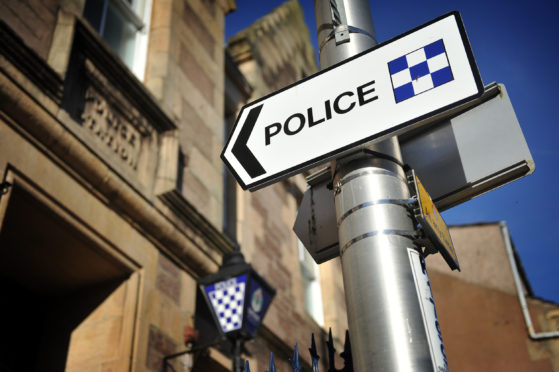Police were today accused of “ignorance of the law” after they told council bosses a jury’s not proven verdict “implied a man was guilty” – even though he was cleared of the charges.
A letter was sent to Dundee City Council in the name of Chief Constable Iain Livingstone objecting to a man in the city being granted a taxi driver licence.
It set out his three minor criminal convictions dating back to more than seven years – before listing a charge for which he was found not proven by a jury in 2017.
They said the controversial not proven verdict – which acquits an accused person of a charge – implied the jury believed the man was guilty “albeit without formal conviction”.
Senior legal figures blasted that interpretation, with one top QC saying the force “could not demonstrate a greater ignorance of the law”.
Brian McConnachie QC, who has previously represented Alesha MacPhail’s murderer Aaron Campbell and Rosdeep Adekoya, who killed son Mikael Kular in Kirkcaldy, said
He added: “I am astonished and concerned by the letter from the Chief Constable objecting to the grant of a taxi licence.
“The letter makes reference to an assault charge in respect of which the accused was acquitted by a not proven verdict.
“The letter explains why the matter has been referred to on the basis of a quite staggering misunderstanding of the not proven verdict.
“This is that not proven shows the jury believed that the accused was guilty but there was not enough evidence to convict.
“The Chief Constable could not demonstrate a greater ignorance of the law and that verdict in particular.
“Juries are advised in every trial that there are three verdicts available to them: guilty, not guilty and not proven.
“The latter two verdicts are both verdicts of acquittal. Before a guilty verdict can be returned there must be at least eight people in favour of that verdict.
“If there is not a majority of the jury in favour of guilty then an acquittal must follow.
“Whether that is by not guilty or by not proven is a matter for them. Sometimes, although by no means always, they are advised that the distinction is a matter of emphasis.
“The idea postulated by the Chief Constable is a view one might get from someone with no experience or knowledge of the law. I would not expect it from Police Scotland.
“It has the prospect of influencing in a false way the views of the public and also one wonders if this has been used in the past in other such applications.
“I consider the Chief Constable should ensure that this is corrected and that those who lodge documents in his name are better informed.”
Another senior defence lawyer, who asked not to be named, added: “If Police Scotland can’t get their heads around the not proven verdict when they are so intrinsically part of the justice system, what chance to juries and the public at large have?
“This man was cleared of the charges against him by a jury. He was acquitted. That is the end of it.
“To hold that against him because of the not proven verdict and imply that the jury actually thought he was guilty is abhorrent.”
The letter bears the signature of Chief Constable Iain Livingstone – though it is understood that was applied to the letter electronically and that it was sent in his name by a central administration department that deals with licensing.
It reads: “Police Service of Scotland is of the opinion the applicant is not a fit and proper person to be granted a taxi driver licence and objects to the granting of such a licence.
“It should be noted that the final charge [listed in the letter] of Assault to Severe Injury and Permanent Disfigurement has been disclosed on this occasion despite the applicant being found not proven for this.
“The reason for disclosure is that where not proven is the outcome in a case this shows the jury believed that the person in question is guilty of the offence, however there is an insufficiency of evidence to convict.
“It is the opinion of the Police Service of Scotland that this is pertinent to this application due to the serious nature of the offence and implication of guilty albeit without formal conviction.”
It is understood that Dundee City Council’s licensing committee was given legal advice that Police Scotland’s interpretation of the verdict should be disregarded when they make their decision.
The force said the letter was “sent in error”.
Police Scotland’s Divisional Commander for Tayside, Andrew Todd, said: “This letter was unfortunately sent in error. A new one has already been issued which supersedes any previous correspondence.”
